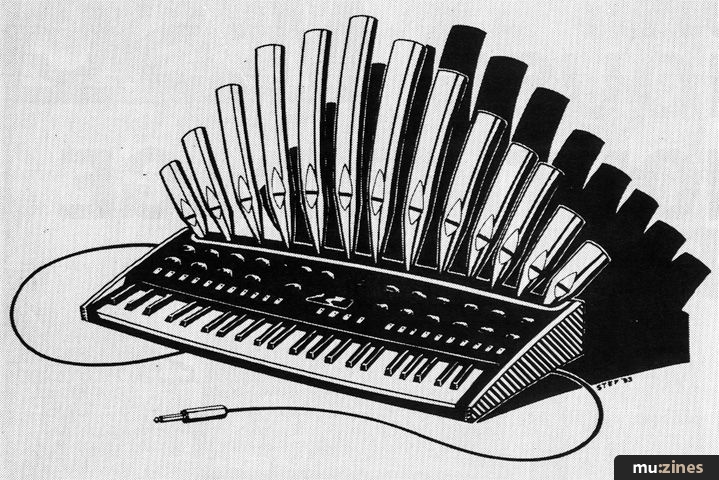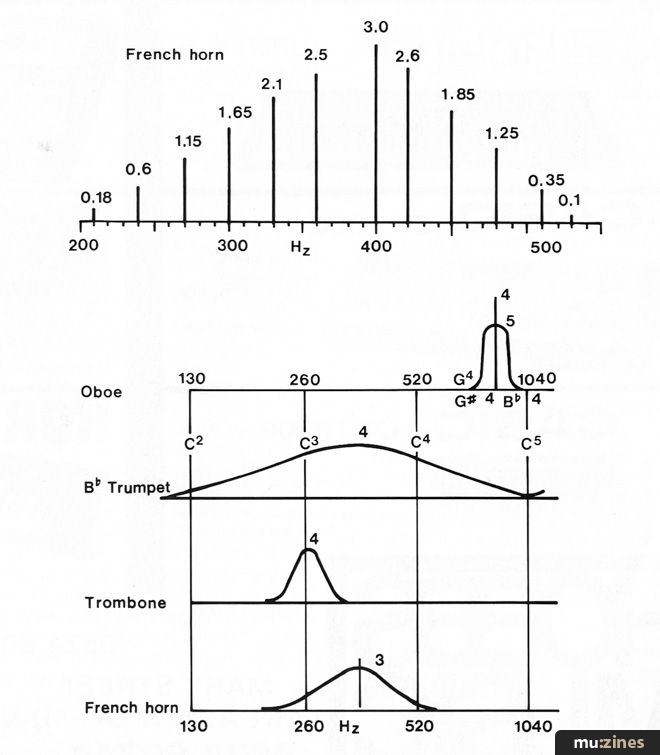Magazine Archive
Home -> Magazines -> Issues -> Articles in this issue -> View
The Electronic Keyboard (Part 4) | |
More Early Keyboard InstrumentsArticle from Electronics & Music Maker, October 1983 | |
More early keyboard pioneers discussed

There is often increased activity in the electronic music field when some new or improved device is introduced. This was the case in 1927 or 28, when the gas tube reached a high state of development in Germany; anyone remember the Stabilovolt, the one and only high voltage regulator which allowed different currents and voltages to be taken simultaneously from its five outputs, without one interfering with the others?
The merits of the gas tube are that it has no heater and delivers a first-class sawtooth waveform of considerable amplitude. The gas mixtures used were very temperature-sensitive, if too cold the tube might not 'fire' at all. However, if cost was not a consideration, useful tubes could be made, and of course if a company were big enough, it could design its own eg. Philips; many Philocordas are still in use today.
Even the very cheap gas tubes like the NE2 can be made to work with enough ingenuity (USP. 1937489, 2017542, 2252184, 2403669 et al). The demerits of simple tubes are that at very low frequencies it is difficult to control the discharge and the tube may not start; this can be overcome by shining a very weak light on it; or better still, by providing a magnetic field round the tube — a few turns of wire energised from an oscillator higher up the chain will do. The other drawback is that 'splash' or random transients may occur, leading to noise and, incidentally, severe radio interference. Most of these defects are due to cathode material impurity.
Thyratron
Efforts were then directed towards better control of the discharge, resulting in the 3 electrode tube, called the Thyratron. By the introduction of a grid, as in a vacuum tube or valve, the firing potential can be controlled by a variable bias; thus a much more stable oscillator was arrived at. This delighted both Oskar Vierling and Friederich Trautwein, who were working on keyboard instruments. Vierling concentrated on organs and piano pickups, whilst Professor Trautwein conceived the idea of a stepless frequency generator, possible because the Thyratron is non-inductive. So evolved the Trautonium, the basis of all musical research for some years In Germany, and a solo instrument in its own right (USP. 2039201, 2141231).
The object of these articles is to show how forward-thinking the early investigators were, despite the lack of components or technology which, today, enable a schoolboy to achieve the same results in an evening's work. It is to these dedicated and persevering people that we owe today's electronic music.
Trautonium

Figure 1. Keying elements of the Trautonium.
To make the frequency range stepless, it is only necessary to cover a semitone interval by a gliding system. The total pitch range of the Trautonium was 3½ to 4 octaves. To cover this with a reasonably compact control element, the biasing resistor is wound spirally round an insulating elliptical former some 36" long (Figure 1). The resistor itself is of 'coiled-coil' construction, to increase the length of wire. This assembly is surrounded by a springy metal gauze cylinder which can be compressed by the finger (or a key), to contact the resistor as required. Dummy rubber keys are mounted above to indicate the normal semitone intervals. The elliptical former is pivoted as shown, so that increased pressure moves the whole assembly downwards, to compress a flexible tube containing a liquid resistance; this allows the signal to pass. It is thus a touch-sensitive instrument.
Rocking the gauze varies the point of contact with the coiled wire, and so produces gliding tones. Two keyboards were provided, mounted one above the other. A later development allowed several octaves to be played simultaneously (DRP. 917470) and this was exploited by Oskar Sala in many concerts in which the Trautonium featured as a solo instrument with orchestra.
A year or two later, when the principles of toneforming were better understood, Harald Bode devised a keyboard instrument which he called the Melochord. Two conventional keyboards, each of 3 octaves compass controlled a mass of peripherals, so that the effect of echo, attack, ring modulators, phase displacements etc. could be investigated. It was really a research instrument.
The outstanding feature was the travelling formant system. It is well known that the limit for static toneforming units is about 3 octaves, so Bode arranged that these could be continuously re-tuned by extra contacts on the keys; thus, whatever characteristics were set up by a formant system could be maintained the same over the keyboard compass. A glance at formant properties (Figure 2) shows how peaky they tend to be.

Figure 2. Properties of formants.
About this time, the well-known firm of Matth. Hohner produced a melodic instrument using valves which was unique in that it looked like an accordion; the playing keys retuned the oscillator but the special feature was the bellows. If compressed at one end, a potentiometer altered the volume; if compressed at the other end, the harmonic content was changed by moving a coupling coil away from another iron-cored coil fixed to the instrument. An early wah-wah, as it were.

Figure 3. Dr. Hugh le Caine's 'metal disc' instrument.
Ingenuity
Ingenuity was not limited to keyboards; a fascinating device was designed by Dr. Hugh le Caine at the National Research Council of Canada (Figure 3). A metal backing disc is cut spirally into segments, insulated from each other. A film of extremely thin mylar is laid on the disc. A similar metal disc, but not cut, is held in the hand by an insulating strap. Each segment is fed with a different waveform, but of the same pitch, as indicated; by moving the disc about over the segments, different waveforms can be mixed together by capacitive coupling. The volume can be varied by separation of the discs. The device can also be used by the right hand, whilst the left hand operates a keyboard to provide the pitch notes. Some extraordinary effects are possible, perhaps some readers may have heard it at one of my many lectures to the IEE at various centres.
Series - "The Electronic Keyboard"
This is the last part in this series. The first article in this series is:
The Electronic Keyboard
(EMM Mar 83)
All parts in this series:
More with this topic
Hands On: Roland TR808 Drum Machine |
The Bass Race |
Expanding the Patchability of the Mini-Moog |
Grafton Vintage Sax - Alto Saxophone |
80 Days - Yamaha CS80 |
A Gallery of Misfits (Part 1) |
Inside The Synclavier (Part 1) |
Interfacing The Past (Part 1) |
The Games People Played - YESTERYEAR'S GEAR: Olympic drums |
Hands On: Moog MiniMoog |
Alternative Analogue - Korg MS20 |
The Time Machine |
Browse by Topic:
Vintage Instruments
Publisher: Electronics & Music Maker - Music Maker Publications (UK), Future Publishing.
The current copyright owner/s of this content may differ from the originally published copyright notice.
More details on copyright ownership...
Topic:
Vintage Instruments
Series:
The Electronic Keyboard
Part 1 | Part 2 | Part 3 | Part 4 (Viewing)
Feature by Alan Douglas
Help Support The Things You Love
mu:zines is the result of thousands of hours of effort, and will require many thousands more going forward to reach our goals of getting all this content online.
If you value this resource, you can support this project - it really helps!
Donations for December 2025
Issues donated this month: 0
New issues that have been donated or scanned for us this month.
Funds donated this month: £0.00
All donations and support are gratefully appreciated - thank you.
Magazines Needed - Can You Help?
Do you have any of these magazine issues?
If so, and you can donate, lend or scan them to help complete our archive, please get in touch via the Contribute page - thanks!

















